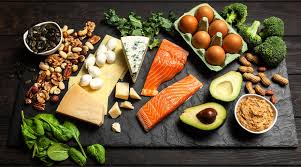Fluid retention is one of the main causes of cellulite and this is because many of us consume too much sodium but not enough potassium. While sodium carries nutrients into your cells, potassium helps to flush excess waste out of your cells which in turn can reduce the appearance of cellulite.

What is cellulite and why does it appear?
Cellulite appears as dimpled bumpy skin with that “orange peel” look. Fatty tissue under connective tissue bulges into the dermis leading to the appearance of dimpled skin. This most commonly occurs in women on their thighs, their buttocks and the upper arms. Apart from fluid retention and the lack of potassium, poor or reduced lymph circulation can be another cause while genetics can also play a role. In addition, digestive disorders, constant stress, impaired vein systems, ageing and being overweight or obese can lead to cellulite. Cellulite removal is often on the top of the “to do” list for those who are concerned about their appearance. Some women start to notice the signs and symptoms of cellulite from quite a young age and it is estimated that as many as 95% of all women will suffer from this condition to some extent. The female body structure is unique in that there is a septae structure under the skin which is very fibrous and mesh-like, making it prone to trap fat cells. It can take some effort and lifestyle changes to undo the damage.
These top ten foods in your diet will add potassium
Many of us think having bananas regularly will give us what we need but bananas are only one of the top ten foods rich in potassium. There are plenty of others:
- Avocado
Avocado is such an easy potassium-rich food and always popular and easy to buy, to prepare and to eat.
- Acorn squash
This is a vegetable source of potassium that is often forgotten about even though it contains high levels of antioxidants including the number of carotenoids found in just one serving of acorn squash.
- Coconut water
This is a potassium-rich food in liquid form, a beverage that is high in electrolytes like potassium but not too high in sugar or calories.
- Dried apricots
These provide an ideal way to add potassium to your diet. In moderation, dried fruit can be healthy, and in the case of apricots, a potassium-rich snack choice.
- Pomegranate
Both the seeds of the pomegranate (and their juice) are rich fruit sources of potassium as well as being loaded with fiber, vitamin C and vitamin K. The juice is reputed to be the healthiest fruit juice in the world!
- Spinach
Spinach is a potassium-rich food with research adding that the spinach also contains plant chloroplast glycoglycerolipids – quite a mouthful but also known to be cancer-fighting agents.
- Sweet potato
This is yet a further potassium-rich food, also containing a higher density of nutrients than white potatoes. Sweet potatoes are also high in beta-carotene,vitamin C and vitamin B6.
- White beans
Not only do white beans contain a significant dose of potassium per serving, but they’re also high in fiber.
- Wild-caught salmon
In addition to potassium (as well as other vitamins, minerals and protein), wild-caught salmon is loaded with health-promoting omega-3 fatty acids, helping to decrease the risk of heart disease and stroke while also helping reduce symptoms of depression, high blood pressure, attention deficit hyperactivity disorder, joint pain and chronic skin ailments like eczema.
- And those Bananas
We all know that bananas are a good source of potassium but they also have plenty of sugar and carbs, making them a quick energy fix before or after a workout helping to repair muscle damage and balance water retention. Bananas are also rich in dopamine, a major mood-enhancing hormone.
A Natural way of Combating Cellulite:
Take up regular exercise such as walking, swimming or yoga, exerting yourself for twenty minutes, five times a week to return your body chemistry to a more balanced state so that cellulite is less likely to appear. Yoga is especially helpful as it gets your leg muscles into shape while helping to smooth out spongy thighs. Yoga encourages lymph flow through fatty areas, flushing out toxins and reducing fat cells.




